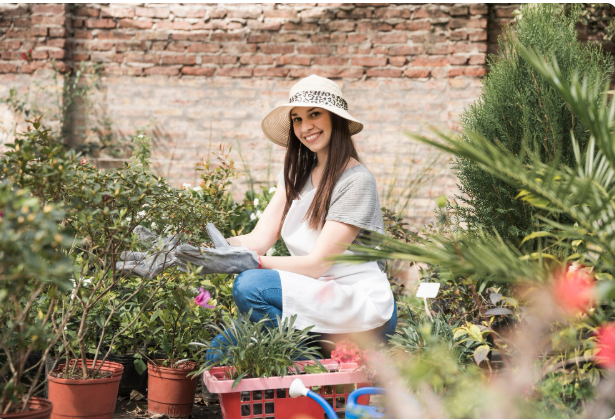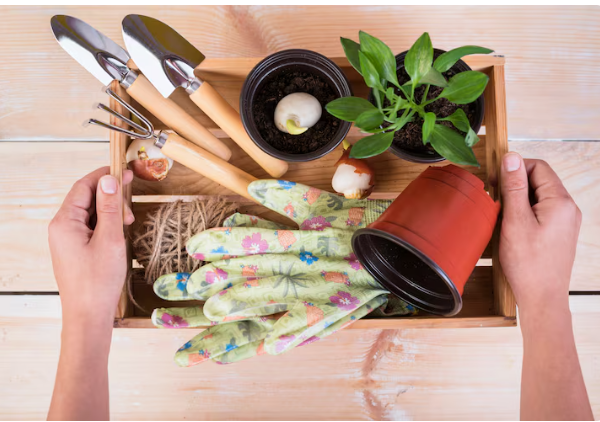Like fitness trackers or home juicers, medicinal plants that you can grow in your garden have emerged as a surprisingly potent cornerstone of everyday wellness, changing daily routines. Many people refer to their gardens as little pharmacies that grow silently next to patios and fences and provide cures that come from familiar leaves and petals rather than from a store shelf. The change feels especially novel since it combines traditional methods with modern routines to create a wellness strategy that is incredibly successful but shockingly comparable to our ancestors’ way of life.
People are reconsidering how they take care of their bodies and minds as a result of the noticeable increase in discussions about stress and sustainability in recent days. Families are creating a very dependable support system that is growing stronger by growing herbs and medicinal plants at home. With its quick growth and ability to provide digestive comfort through beverages that feel easy and surprisingly inexpensive, mint frequently becomes the first access point. Mint is very adaptable for novices because of how easily it grows, especially for people who approach gardening with the same careful curiosity they used to approach learning new technology.
| Category | Information |
|---|---|
| Topic | Medicinal Plants You Can Grow in Your Backyard |
| Primary Focus | Homegrown remedies for stress, digestion, immunity, and skin care |
| Key Plants | Mint, basil, rosemary, thyme, lavender, aloe vera, calendula, echinacea |
| Growing Essentials | Moderate watering, strong light, loose soil, seasonal upkeep |
| Reference Source | https://www.motherearthnews.com |
Rosemary, a herb that smells like attention itself, comes right following. It emits a fragrance when touched with the fingertips, which many people say immediately sharpens their minds. Innumerable studies have commended it for aiding digestion and memory, but in the backyard it takes on a more intimate role, serving as a daily reminder of how approachable healing can be. Rosemary’s upright stems give the appearance of little trees, standing tall and proud despite erratic weather, providing a particularly uplifting kind of resilience.
When individuals grow it themselves, they rediscover the relaxing properties of basil, which adds another depth to culinary delight. Unaware that basil has long been used as a calming herb, many home cooks used it to liven up their meals during the pandemic. Because basil leaves grow swiftly, the plant can be harvested much more quickly than many novices anticipate. Early on, it’s very evident why so many families depend on it for flavor and energy.
Delicate yet subtly potent, thyme develops into a plant that promotes respiratory ease. Its perfume, which is particularly enhanced when gathered only minutes before steeping, is comforting when steeped in warm water. The plant thrives in little containers or huge beds with the same patience, requiring little but giving lavishly. It is consistent, subtle, and genuinely helpful, much like a trustworthy buddy, according to gardeners.
Lavender has a distinct presence. Even before any tea or salve is brewed, its aroma offers emotional comfort as soon as the breeze blows through it. Lavender is a favorite among celebrities who give glimpses of their gardens because of its distinct scent. With radiant joy, Oprah displays her lavender beds, and her videos inspired a wave of lavender planting that spread from Brooklyn balconies to Los Angeles courtyards. Lavender has become a popular natural exhalation in many households, particularly on lengthy evenings when it seems more important than ever to slumber.
These gardens gain depth from the addition of sage and oregano. Sage has been used as a digestive aid, purifier, and protecting plant for many years. Widely used in cooking, oregano has strong antibacterial properties that are especially helpful in homemade broths. Seeing these plants flourish serves as a reminder that mending doesn’t always need to be complicated. Sometimes all it requires is soil that drains well, water, and sunlight.
Then there are the more specialized medicinal plants, each of which provides a distinct form of solace that is very satisfying when cultivated by hand. Aloe vera’s cold, thick gel turns common irritants into moments that can be controlled. Its presence in the garden feels almost ceremonial, like having a gentle paramedic on hand, and a quick slice of its leaf relieves small burns or dry skin. Aloe is ideal for novice gardeners who are concerned about overwatering because it is incredibly resilient and can tolerate neglect with remarkable patience.
Coneflower, or Echinacea, is a tall, colorful plant that promotes immunity and draws pollinators. Its vibrant, dramatic petals serve as a natural remedy and a focal piece for the backyard. A lot of individuals say that their first harvest of echinacea marks a sea change in their gardening journey, when wellbeing is earned rather than bought.
Calendula, which grows in sunburst orange and yellow hues, combines comfort and color. Its petals have anti-inflammatory properties and are easily included into handmade salves that are passed down through families like recipes. The ability of calendula to reseed voluntarily, which eliminates the need for constant planting and serves as an annual reminder that healing can be cyclical and self-sustaining, is particularly inventive.
Similar generosity is shown by chamomile, which produces tiny, daisy-like blossoms that are used to make teas for relaxation, rest, and mild digestion. Many individuals believe that harvesting chamomile, which involves pinching the soft blooms and letting them dry, is a calming ritual that reduces tension and makes time for introspection.
Lemon balm improves the environment. It is very effective at preparing teas that reduce tension because its leaves exude a vibrant aroma that calms anxiety and revitalizes the mind. A slight change in mood might be triggered by simply touching the plant. Compared to other herbs, lemon balm requires a lot less work due to its quick growth, so novices can feel competent straight away.
Tulsi, often known as holy basil, has a deeper meaning. Tulsi is revered in many cultures for boosting immunity, lowering stress, and increasing resilience. Because of its restorative properties, tulsi tea has gained popularity among public figures, encouraging others to grow it at home with newfound assurance. Because tulsi requires warmth, it grows best in sunny areas and exhibits a tenacity that reflects the emotional fortitude it fosters.
Yarrow gives this backyard pharmacy a new dimension. Its clustered blossoms and feathery leaves have long been used medicinally to relieve pain and aid with wound treatment. Yarrow has a timeless, robust, and subtly potent quality, much like a plant from ancient tales.
These gardens provide autonomy, which is becoming more and more desirable, through thoughtful gardening. Using plants as tools for everyday resilience, families take charge of their wellness regimens. This change is especially creative because it combines traditional wisdom with contemporary curiosity to create a calmer, healthier, and more purposeful way of living.
Cultivating therapeutic plants is also important to society. Neighborhoods reunite through communal gardening areas, communities share herbs during get-togethers, and kids learn the names and applications of plants that might soothe them. Harvesting chamomile or mint turns into a form of meditation, demonstrating how therapeutic techniques can help people become more present-minded.
By cultivating something much simpler yet incredibly empowering—plants that provide healing, connection, and a revitalized sense of agency—backyard medicinal gardens encourage people to reconsider wellness.

